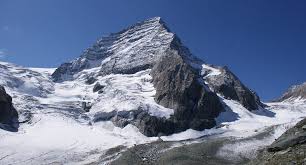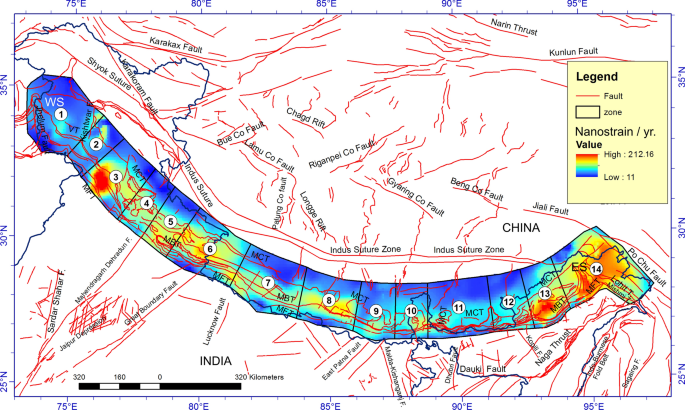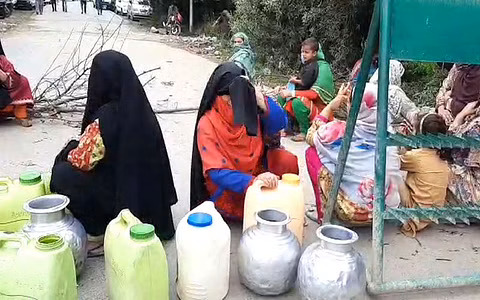It is a part of Himalayan range and is located some 26 kilometres north of Pahalgam
By: Mohammad Jalal-Ud-Din
One of the great problems world confronts today is its self-begotten woe of environmental pollution. Summarily the environmental pollution is the summative result of harmful activities of man against nature.
This is somewhat paraphrased into air, soil/land, water, noise, thermal and radioactive pollutions. Of this air pollution is the main type threatening the environment, plants, humans, animals and all living organisms. This effects our glacial reserves also.
Kolahoi glacier, which some call the crown of Kashmir, is one of the hits. Kolahoi is a pyramid shaped highest mountain peak in the region at an elevation of some 18,800 ft from sea level in Pahalgam tehsil of District of Anantnag in Jammu & Kashmir.
It is a part of Himalayan range and is located some 26 kilometers north from Pahalgam and 16 kilometers south of Sonamarg which falls in the district of Ganderbal wherefrom flows the river Sindh.
Also Read : Keran: A Pristine Paradise in Kashmir, Unearthing Its Enchanting Beauty
It derives its name from the peak Kolahoi. Its water flowing downstream gives us well know river Lidder and reinforces later on river Jhelum which facilitates opportunity for the livelihood and the employability of millions of people directly or indirectly through the activities related to agriculture, aquaculture, apiculture, floriculture, horticulture, sericulture, viticulture, drinking water and tourism especially to the locale. It boosts the economy, ecology and refreshes the environment. This is a five kilometer long hanging glacier where climate remains cold throughout the year and the temperature dips down zero degrees centigrade during winters.
The glacier has, however, depleted over the years due to effects of climate change. The scarce snowfall, its period and the timing shifting to late winters are among the causative factors for the shrinkage of glacier. Fallen snow in late winters does not settle immediately but melts quickly as every day gets warmer. Added to this is the increased human activity by way of pleasure trips in the area. Various national and the international environmental experts and research institutes have felt this undesirable change and voiced their concern to take retrieval measures. The Energy & Research Institute (TERI) New Delhi specializing in the fields of energy, environment & sustainable development, initiated a Glacial Research Programme in 2008 to analyse climatic & hydrological changes in the Himalayas. Kolahoi was selected as one of the five glaciers the other being Rohthang Glacier in Sikkim. It stated, “Glacier change for Kolahoi was calculated from 1980 to 2015 using satellites images. It shows a decline in length by 10 %, reduction in boundary (aerial surface) by 13.5% and loss in volume by 8%”. This means on cumulative scale the glacier is losing ice at an alarming rate. Research conducted by TERI said that, “Glacier (Kolahoi) has lost between 13 to 18 percent of its total volume in the past four decades and is retreating by almost 10 feet (3 meters) a year”. Muneer Ahmad, who has been Environment Expert at National Geographical Institute Uppal Hyderabad in his survey on Glacial Research in Kashmir said, “The spatial extent of the glacier has changed from 19.34 square kilometers to 17.23 square kilometers in 2001 in the past decades. The rate of retreat in 2007 was 21.88 meters in the main snout”. The environment created around has a negative impact on the mass balance of the glacier with the natural result that glacier is shrinking more in summer than it expands in winter.
Also Read: Willow Wicker Crafts from Kashmir: A Timeless Artistry
The environmental experts in a conference conducted by United Nations Organisation during 1992 in Rio admitted the fact that change in the size of glacier was an important indicator of a climate change. The ‘Sunday Guardian’ dated 6/7/2013 in one of its essays said that the biggest cause for melting of glaciers of Kashmir in fragile eco-system was influx of large number of people there. The Earth Sciences tell us of connection among changes in glacier, late or little snowfall, floods and the environment. Two European environmental experts of France and Norway in one of their reports in ‘ Nature ’ dated 23-8-2012 have pointed out that every year the Kolhoi glacier melts by an average of half metre in J & K which is more than the average of the Himalayan range of glaciers. Satellites pictures also show that not much snow is left on these frozen water treasures.
Professor Syed Iqbal Hasnain who has been Head (2008) ‘Glacial & Climate Change Commission’ Government of Sikkim says, “In my opinion if nothing is done immediately the entire glacier will melt in 10 years. Because the glacier’s accumulated area is further reduced and I think it is less than a kilometer now. The situation there is very serious now and the de-glaciations’ are going on at a faster rate and unto the base of the Kolahoi peak the glacier has melted out. This important ice cover is a kind of natural heritage which was formed by last ice ages which happened 10,500 years back. But now the recession of this glacier has reached an alarming stage.”
Also Read : Aru Valley: A hidden gem for nature lovers and adventure seekers
Tarns which form in the Himalayan glaciers, glens and other mountain regions are due to the global warming and such local level activities as become cause for rise in temperature. In the religious books of the Hindus too protection and preservation of environment has been emphasized vehemently. One of the national dailies ‘Times of India’ in its 4/6/2009 edition under a title ‘ Vedic Perspective on Environment’ stated, “Do not harm the environment; do not harm the water and flora; earth is my mother, I am her son; may the waters remain fresh, do not harm the waters. Tranquility be to the atmosphere, to the earth, to the waters, to the crops and vegetation.” Realising the imminent environmental threats likely to effect Gaumukh glacier due to the increasing number of yatris of Charm Dham yatra, the Government of Uttrakhand took regulatory measures and is said to have limited the number of yatris to 150 per diem which is in force since 4/2008. In the year 2012 Government of India declared 135 kilometers of Ganga Nadi from Gaumukh to Uttrakhand as supper sensitive environment zone to protect the Gangotri glacier wherefrom the Ganga flows. Effective steps were taken under National Ganga River Basin Authority to save the river from the impurities and the waste. Subject experts advise that environmental pollution & global warming are definitely to disturb the natural balance. Doubtlessly natural balance wishes all alike but when hurt it smashes too starting from epicenter. After air, water is the most important necessity to live. If perennial resources of water lying in glacial wealth are lost or fall short of reasonable consumption, heavens may hesitate to come to rescue. Government has to take effective steps expeditiously to regulate activities that help preserve & protect the glacial/other troves of nature. The nature in return will take care of ours. Avoiding or restricting the pleasure trips in number, conduct and the duration may be among the measures to preserve sources of water wherefrom every life originates as per the divine revelation in the holy Quran.
Also Read : Naranag: Exploring the Rich History, Enchanting Scenery, and Trekking Paradise of Kashmir






